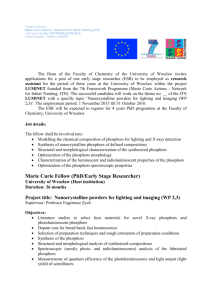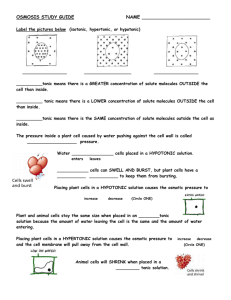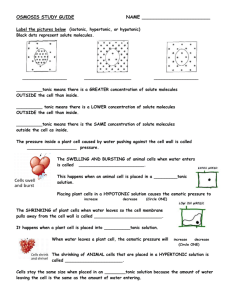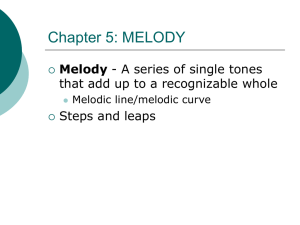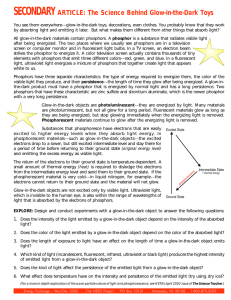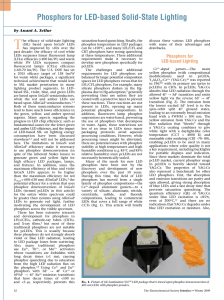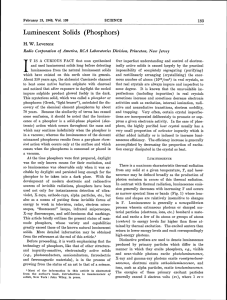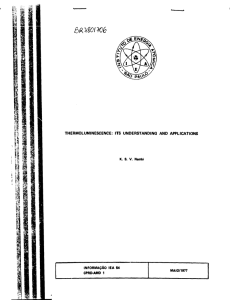Fun with Phospors
advertisement
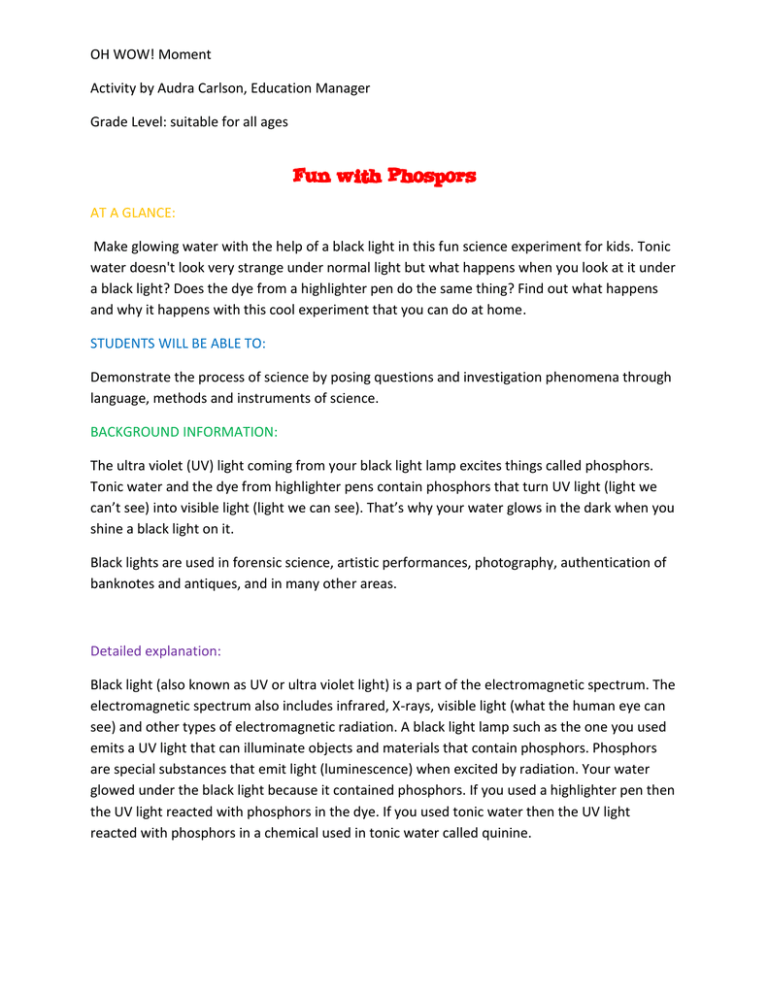
OH WOW! Moment Activity by Audra Carlson, Education Manager Grade Level: suitable for all ages Fun with Phospors AT A GLANCE: Make glowing water with the help of a black light in this fun science experiment for kids. Tonic water doesn't look very strange under normal light but what happens when you look at it under a black light? Does the dye from a highlighter pen do the same thing? Find out what happens and why it happens with this cool experiment that you can do at home. STUDENTS WILL BE ABLE TO: Demonstrate the process of science by posing questions and investigation phenomena through language, methods and instruments of science. BACKGROUND INFORMATION: The ultra violet (UV) light coming from your black light lamp excites things called phosphors. Tonic water and the dye from highlighter pens contain phosphors that turn UV light (light we can’t see) into visible light (light we can see). That’s why your water glows in the dark when you shine a black light on it. Black lights are used in forensic science, artistic performances, photography, authentication of banknotes and antiques, and in many other areas. Detailed explanation: Black light (also known as UV or ultra violet light) is a part of the electromagnetic spectrum. The electromagnetic spectrum also includes infrared, X-rays, visible light (what the human eye can see) and other types of electromagnetic radiation. A black light lamp such as the one you used emits a UV light that can illuminate objects and materials that contain phosphors. Phosphors are special substances that emit light (luminescence) when excited by radiation. Your water glowed under the black light because it contained phosphors. If you used a highlighter pen then the UV light reacted with phosphors in the dye. If you used tonic water then the UV light reacted with phosphors in a chemical used in tonic water called quinine. OH WOW! Moment Activity by Audra Carlson, Education Manager Grade Level: suitable for all ages There are different types of luminescence, they include fluorescence (used in this experiment, it glows only when the black light is on), phosphorescence (similar to fluorescence but with a glow that can last even after the black light is turned off), chemiluminescence (used to create glow sticks), bioluminescence (from living organisms) and many others. MATERIALS: Tonic water Water Highlighters Black light Glass or clear plastic bottle Laundry detergent with whitening agents PROCEDURE: 1. If using highlighters, carefully cut open to remove felt inside 2. Soak in plain water until ink colors water 3. If using tonic water, no need to mix unless you would like to change the color of the liquid. 4. With laundry detergent, pour into a glass 5. Shine your Black light to see liquid glow! Try this: Dip a coffee filter into different colors and let dry, use to create black light art! Siphon fluids into clear tubing to create your own ‘neon’ sign on a piece of cardboard. Make your own black light paint by mixing a bit of laundry detergent into your regular washable paint. Do the various liquids react differently to the black light? Which glows brightest? What do you notice or observe? What conclusions can you make? What can you do differently next time?
